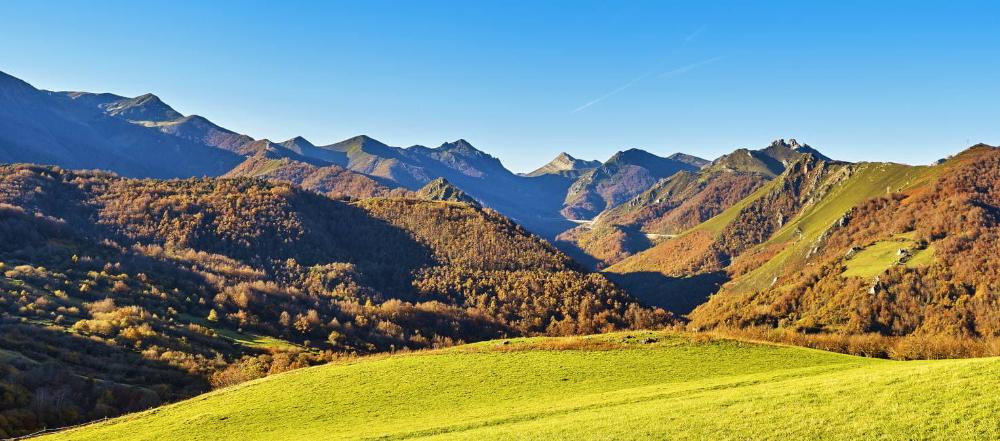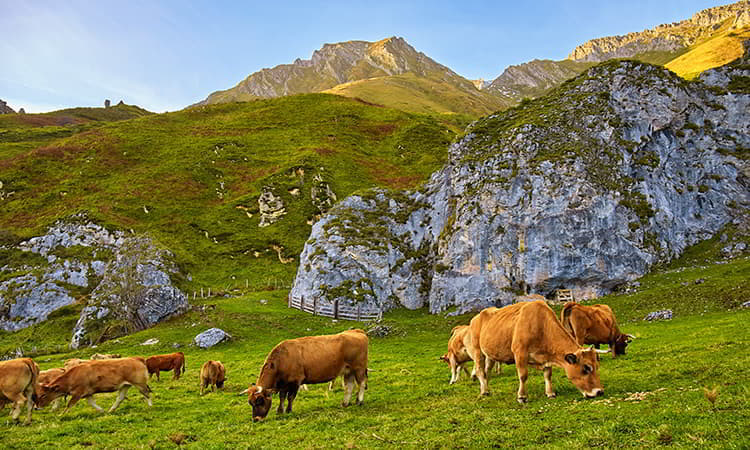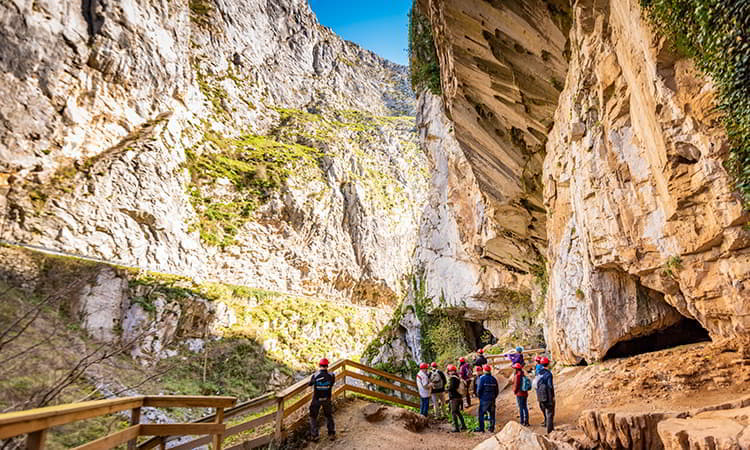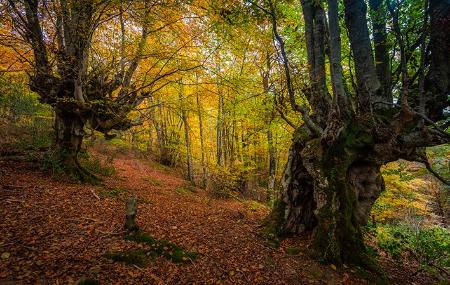
Las Ubiñas-La Mesa Natural Park
- Title Lena, Quirós y Teverga Asturias Centre
- Extension Extension: 451 km 2
- Maximum elevation Maximum elevation: 2,417 m. at Fontán Norte
Images
What to see
- Ethnographic Museum of Quirós.
- Prehistoric Park (Teverga).
- Routes: Senda del Oso (Santo Adriano, Proaza, Quirós and Teverga), Cascada del Xiblu ( Teverga), Bosque de Valgrande (Lena), Camín Real del Puerto Ventana or de las Reliquias (Quirós), Camín Real de la Mesa and Vía de la Carisa.
- Protected areas in the Park: Natural Monuments of Cueva Huerta (Teverga), de los Puertos de Marabio (Teverga, Yernes y Tameza and Proaza) and Tejo de Bermiego (Quirós).
- Flora and fauna watching: Montegrande and Valgrande beech forests, stands of holly in Puerto de Agüeria, Berrea Interpretative Trails (consult: tierradeosos.es), bear, golden eagle, Pyrenean desman, Egyptian vulture and griffon vulture.
- Landscapes: Meicín Valley, at the foot of Ubiña (Lena), Valdemurio Reservoir (Quirós), Los Garrafes (Quirós).
- Code GOOD PRACTICES.
- More hiking routes.
Info
Visitors who come to the Park with pets must maintain special control over them, as stipulated in the sectorial regulations. They must be properly leashed and controlled.
The Las Ubiñas-La Mesa Natural Park was declared a Biosphere Reserve in 2012. It comprises a mountainous territory with a relief of pronounced contrasts, in which the Peña Ubiña massif, the second highest mountain in the region after the Picos de Europa, with altitudes of over 2,400 metres, rises close to the border with the lands of León.

Located in the central sector of Asturias, it includes the lands of the councils of Lena, Quirós and Teverga.
The environmental values that define the park are its biological diversity and its magnificent state of conservation. Its surface area contains examples of more than half of the Asturian plant families, with more than a third of the area occupied by mature forests dominated by beech forests. The Cantabrian fauna is very well represented, with species such as the brown bear and the Cantabrian capercaillie, included in the Regional Catalogue of Threatened Species, or the otter and the desman, two groups associated with watercourses of high environmental quality. Birds of prey, roe deer, deer, chamois, wolves and foxes are also part of its animal life. Among the waters that flow through the Las Ubiñas - La Mesa Natural Park, the gorge formed by the river Val de Sampedro stands out, in which Cueva Huerta is located, declared a Natural Monument.

In addition to this environmental wealth, there are also numerous cultural values. It has one of the richest cave paintings in the northwest of the peninsula (Abrigos Rupestres de Fresnedo), with pictorial representations from the Bronze Age - Iron Age. It also preserves remains from the castreña period, although its most representative elements are undoubtedly the Vía Carisa and the Camino Real de la Mesa, both Roman roads as old as the first Asturian natives, which connected the region with the León plateau.
In the surrounding villages you can still see good examples of traditional Asturian mountain architecture, with stone houses with wooden corridors. Alongside these nuclei coexisted the brañas, summer grazing areas, where simple stone huts covered with tiles or broom - the teitos - were built, as well as the corros or cabanos, circular constructions with a false stone dome.
Plant life
Eleven of the nineteen major types of vegetation in Asturias are present in Las Ubiñas-La Mesa Natural Park, as a result of its orographic complexity and the use that man has made of this territory. A third of its surface area is occupied by forests, with beech forests being the dominant woodland formation, but there is no shortage of oak groves, beech groves, birch groves, chestnut groves and holly groves.
Above the forest boundary, there are extensive areas of pastureland, used by the inhabitants of Quirós and Lena and even by transhumant herds of merino sheep. Three species of endangered flora are preserved in these pasture areas: the Asturias daffodil, the trumpet daffodil and the gentian.
In the higher areas with stonier soils, mountain scrubland is common, such as creeping juniper, bilberry and brecina. On the other hand, in the limestone rocky areas, other plants appear alongside the juniper, such as the bearberry and the male torviscum.
Wildlife
The great biological richness of Las Ubiñas-La Mesa Natural Park makes this one of the places where you can see the magnificent brown bear. Within the forest mass, capercaillies can be seen sharing the space with specimens such as wolves, wild boar, foxes, genets, wild cats, stoats and badgers. Roe deer, red deer and chamois roam the high mountains, as do large birds of prey such as eagles, vultures, Egyptian vultures and peregrine falcons.
The otter and the desman, prove with their presence the incalculable environmental value of the waters that flow through the park. The Cueva Huerta Natural Monument is a refuge for several families of bats.
Map
Location
Las Ubiñas-La Mesa Natural Park is located in the central sector of Asturias, and includes the councils of Lena, Quirós and Teverga.






